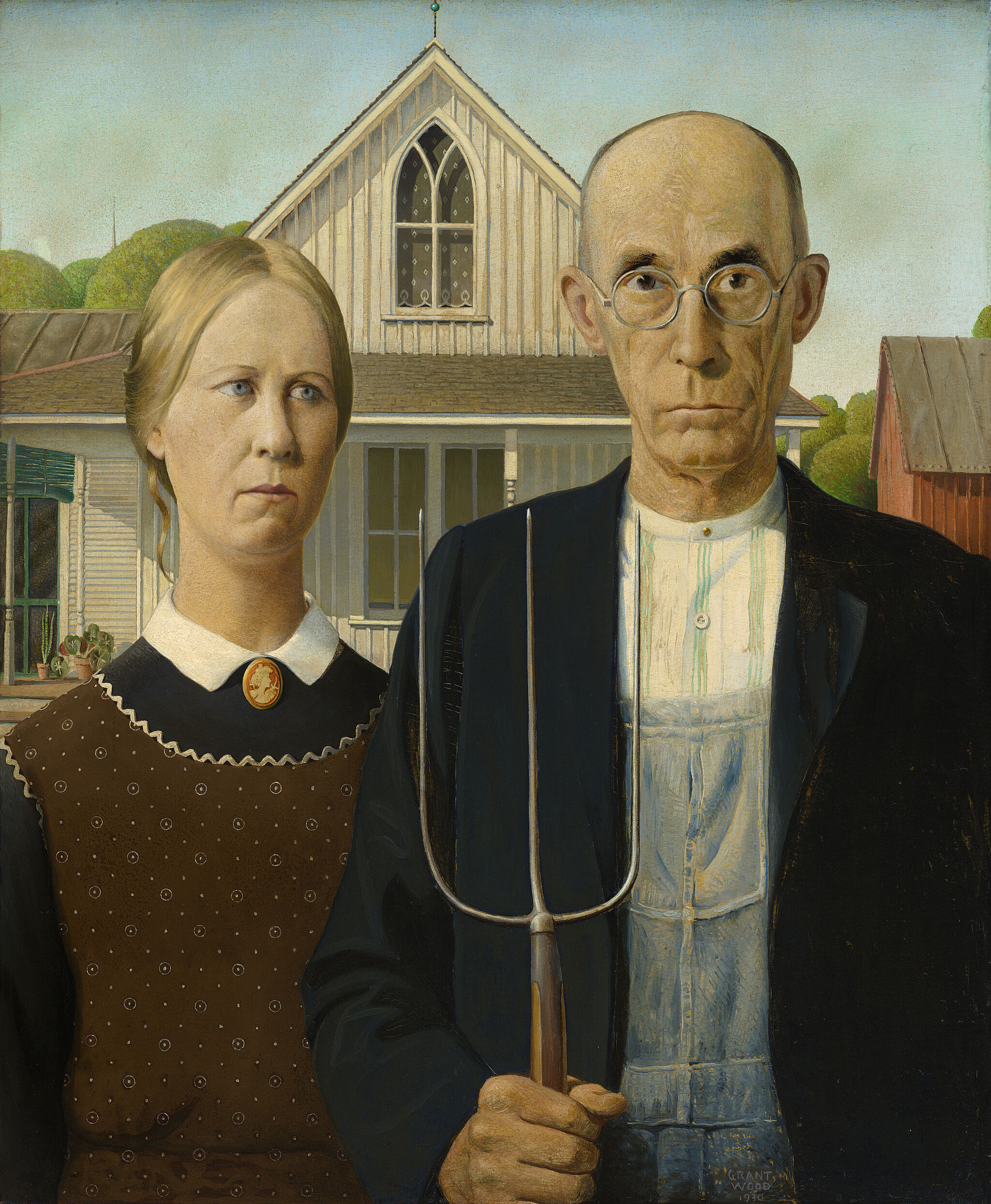Grant Wood: American Gothic and Other Fables | Art & Artists
Mar 2–June 10, 2018
Grant Wood: American Gothic and Other Fables | Art & Artists
Portraits
3
By the late 1920s, Grant Wood had come to believe that the emergence of a rich American culture depended on artists breaking free of European influence and expressing the specific character of their own regions. For him, it was Iowa, whose rolling hills and harvested cornfields served as the background for his earliest mature portraits, those of his mother and Arnold Pyle. In Europe, he had admired Northern Renaissance painting by artists such as Hans Memling and Albrecht Dürer. By the time he painted American Gothic in 1930, he had concluded that the hard-edge precision and meticulous detail in their art could be used to convey a distinctly American quality, especially suggestive of the Midwest. Joined with Iowan subject matter, it became the basis of his signature style.
Wood felt that all painting, portraiture included, must suggest a narrative in order to engender the emotional and psychological engagement he associated with successful literature. Consequently, he included images that hinted at the life and character of the depicted subject, taking care to avoid anecdotal illustration by painting archetypes rather than individuals. He left the “props” in his portraits intentionally ambiguous, making the stories they intimate so enigmatic that they defy ready explanation; they are puzzles to be deciphered by viewers based on their individual attitudes and experiences. As a result, Wood’s portraits have historically invited multiple interpretations.
American Gothic, 1930
Premiering at the Art Institute of Chicago in October 1930, this painting captivated the public’s imagination and catapulted Wood into the national spotlight overnight. A couple—modeled on Wood’s sister, Nan, and his dentist—stand in front of a Midwestern house. The house is notable for its lone “gothic” window, a typical feature of the then-popular Carpenter Gothic style of architecture, in which gothic elements are used in otherwise simple, modern wood structures.
Wood identified the pair as father and daughter, though the work was initially assumed to be a portrait of a husband and wife. “I simply invented some ‘American Gothic’ people to stand in front of a house of this type,” Wood later explained. From the painting’s debut onward, its meaning has been the subject of endless speculation. What has remained central is its seeming embodiment of something stereotypically American.

